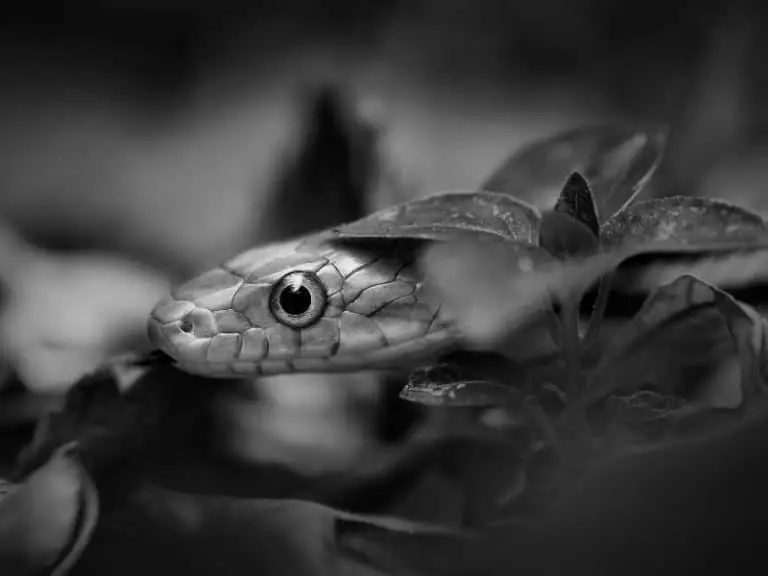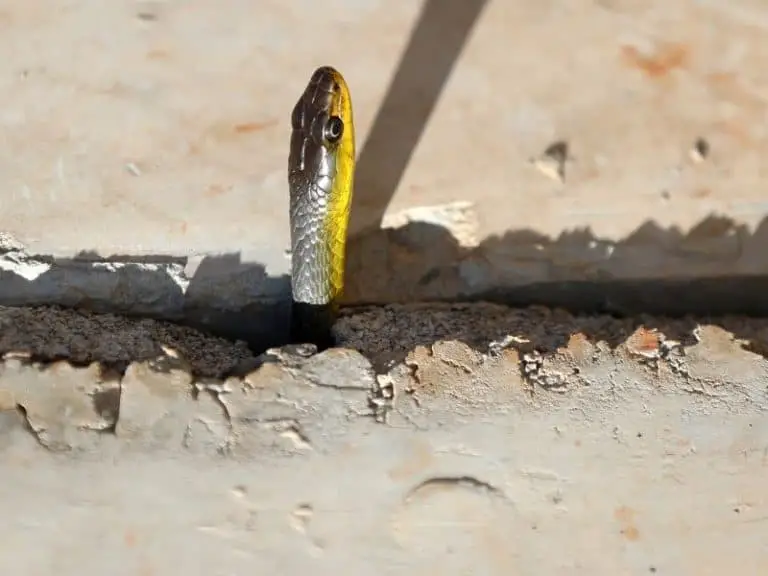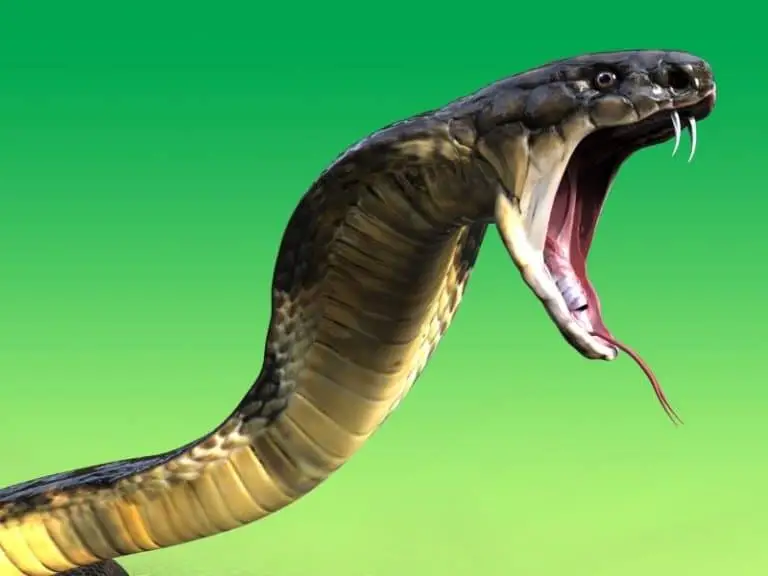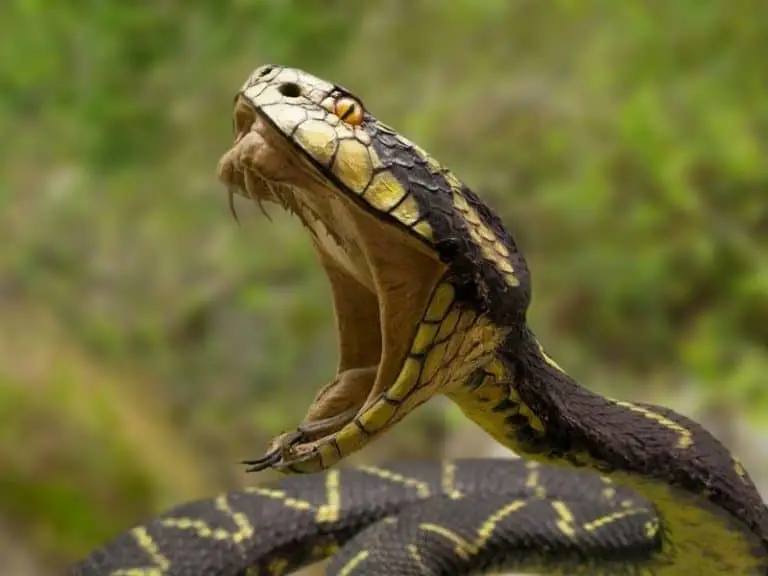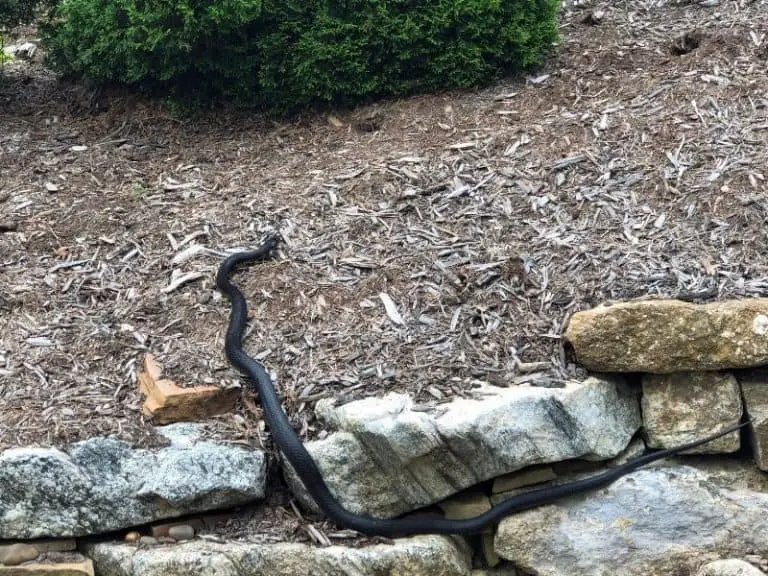Are Garter Snakes Dangerous to Dogs?
Our pet dogs love to explore their environment and go on many adventures in and around our yard and beyond, which makes them likely to encounter garter snakes.
Unfortunately, garter snakes do not want nor appreciate the attention given to them by dogs. They can move away in order to avoid being played upon or bitten by dogs, but they can also strike and bite in defense.
It is therefore helpful to know if garter snakes are dangerous to dogs so that you know what to do should such an encounter occur.
Garter snakes are generally not dangerous to dogs. They only react to dogs when dogs approach them and play, lick, bite, or attempt to kill or eat them. Garter snake bites can cause irritation, and its pungent musk may cause gagging, salivating, or swelling.
Harsher reactions need veterinary attention.
Any snake bite, even if it came from supposedly non-venomous snakes, can cause complications in your dog, such as irritation, infection, and or course, a wound.
Garter snakes have previously been thought to be non-venomous, but now, they are known to have a mild neurotoxic venom.
This venom is generally not harmful to humans or dogs, although individual reactions to a bite naturally can vary.
Let us discuss how you can keep your dog away from garter snakes, and what to do when it has had an unfortunate encounter with a garter snake.
The Danger of Garter Snakes to Dogs
Garter snakes are very common in many places, and it can be quite likely for your dog to encounter these snakes when it explores its surroundings.
In fact, garter snakes are the most likely non-venomous snake that your dog will encounter in your yard.
Garter snakes can pose a danger to you and your dog, although it is not nearly as dangerous as the more venomous species of snakes such as rattlesnakes, cottonmouths, and copperheads. A bite from a garter snake can cause disease, infection, and several other issues in your dog.
According to the Morris Animal Foundation’s Chief Scientific Officer Dr. Barbara Wolfe, garter snakes have only been recently found to have mild venom in their posterior fangs.
It is thus possible for their bites to result in some unwanted consequences that will warrant medical attention.
Wolfe says that the mild venom functions as a stunning chemical that immobilizes the prey of garter snakes so that they can be more easily ingested by the snake.
She also adds that garter snakes have rows of very small teeth with posterior fangs, which are unlike the large fangs that deliver the venom in rattlesnakes and other related vipers.
Thus, Wolfe says, garter snake bites generally cause no harm in humans and large mammals such as dogs.
Finally, Wolfe advises that there is no need for alarm should your dog bite a garter snake or eat it. Depending on the individual dog, medical attention might be needed.
The snake, finding its life in danger when aggressively confronted by a dog, will produce a smelly musky odor that may cause drooling in your dog, or even vomiting.
However, this musk is not toxic and will not cause serious or long-term harm to your dog.
The musk, however, may help your dog be wary of garter snakes in the future because of the unpleasant experience it had with the offending olfactory emission.
Your dog will then think twice about aggressively pursuing or harassing garter snakes the next time it encounters one.
Garter snakes generally do not tend to bite. They really just want to be left alone to live their lives in peace. If your dog is bitten, clean the bite site and observe your dog for any negative reactions.
You may call your veterinarian if you want professional reassurance and help.
A visit to the vet will probably be necessary if harsher reactions occur to your dog after a garter snake bit it, or if it ate any part of the snake’s body.
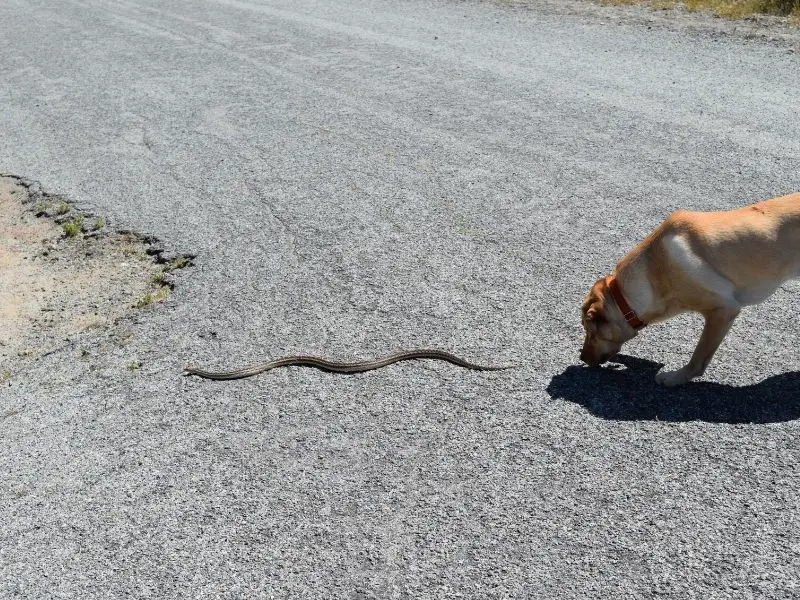
Dogs’ Behavior in Snake Encounters
Dogs are generally curious about anything and everything that they see, especially those which are moving about, including wild animals such as snakes.
Dogs have a keener sense compared to humans. The dogs’ acute senses of hearing and smell help them become immediately aware of snakes in close proximity.
They can either act playfully toward snakes or be alarmed and react aggressively. They can bark to tell their owners that there is something that needs attention in what they encountered.
Meanwhile, snakes generally do not want the dog to notice it or take interest in it. Snakes usually do not want large, hulking animals hovering around them or making noises and directing attention towards them.
Snakes only usually want to quietly hunt for prey that is as big or smaller than them.
Garter snakes may or may not show fear upon encountering your dog, but you cannot count on it being friendly.
How do you determine that your dog found a snake? Dogs are generally inquisitive, and they use their eyes, ears, and nose in sensing their environment.
You can see them twitch their nose, sniff excessively, point to the snake’s location, or bark at the snake either in confusion and fear or out of simple curiosity.
Dogs can also exhibit other behaviors such as pointing up their paws, having their tails stiff, and pointing their nose in the snake’s direction, or at least towards the scent the dog is detecting.
When dogs use their sense of hearing, they can show this by moving and rotating the ears about like antennae.
Upon an encounter with a garter snake, dogs can bark, whimper, howl, whine, or otherwise direct attention to their discovery.
How to Deal with Garter Snakes in Your Yard
When dealing with garter snakes, it is first important to know what they look like and how to identify them. There is a total of 35 garter snake species existing today. They are snakes with slim, elongated bodies that have long stripes running through their entire length.
These stripes vary in color from green to yellow to red to orange or gray. There are even turquoise-colored stripes. Meanwhile, they have lighter-colored underparts.
What Motivates Garter Snakes
To understand garter snakes more, it is important to know what motivates and attracts them, as well as what they avoid.
Therefore, it is worthwhile to know their biology and ecology. Among the most important aspects in this regard is their need for adequate food and safe shelter.
Reptiles, including garter snakes, are ectothermic. They rely on the environmental ambient temperature to regulate their body temperature.
Their bodies cannot self-thermoregulate, and they need to bask under the heat of the sun if they are cold and hide in warm places during winter.
Conversely, they also need to cool down and seek shade if the surroundings are too hot.
If your yard or garden has the perfect conditions for them, garter snakes may well establish themselves there. Garter snakes like grassy and moist areas, and are especially attracted to areas near bodies of water, such as lakes or streams.
Your garden and property may be one of the best places to hide in, which is why garter snakes are attracted to them. They like areas that have shade and cover. An area with piles of boards and debris, as well as dense vegetation, rocks, and logs will attract garter snakes.
In addition, garter snakes eat food items such as small insects, mammals, and amphibians.
These include animals commonly found in gardens and yards such as mice and frogs. In this way, garter snakes can be good for your garden and yard because they eliminate pests.
They will help in preventing insects and mice and other pests from damaging your garden and your home.
Even if garter snakes are mostly solitary in nature, during hibernation and breeding they congregate in large groups. They do this to find mates and to keep themselves warm in the cold winter.
Since they also emit a musk smell, large numbers of garter snakes inside or under the home can be troublesome because of the unpleasant odor.
The Negative Effects of Garter Snakes
Despite the benefits that they provide, garter snakes may also become a problem on your property.
Most people grew up being taught to fear snakes. Their presence in your yard may thus cause fear, anxiety, and discomfort for you and your family or guests.
Garter snakes may also cause unwanted encounters with pets and children because even if they are very shy and withdrawn, they can still bite if you accidentally startle them or step on these quiet animals.
There are an estimated 1.2 to 5.5 million snakebites on humans recorded every year. Thankfully, most of these bites come from non-venomous snakes.
And while garter snakes do have a mild neurotoxin useful for hunting prey, this toxin is harmless to humans. They are thus considered safe and harmless snakes. Garter snakes can also bite dogs if they feel threatened or are attacked by them.
While garter snakes eat insects that are harmful to you and your garden, they also eat those beneficial insects that contribute positively to your plants and your immediate environment.
The presence of many garter snakes can therefore lower or eliminate the population of beneficial insects that protect your plants and help them grow healthy.
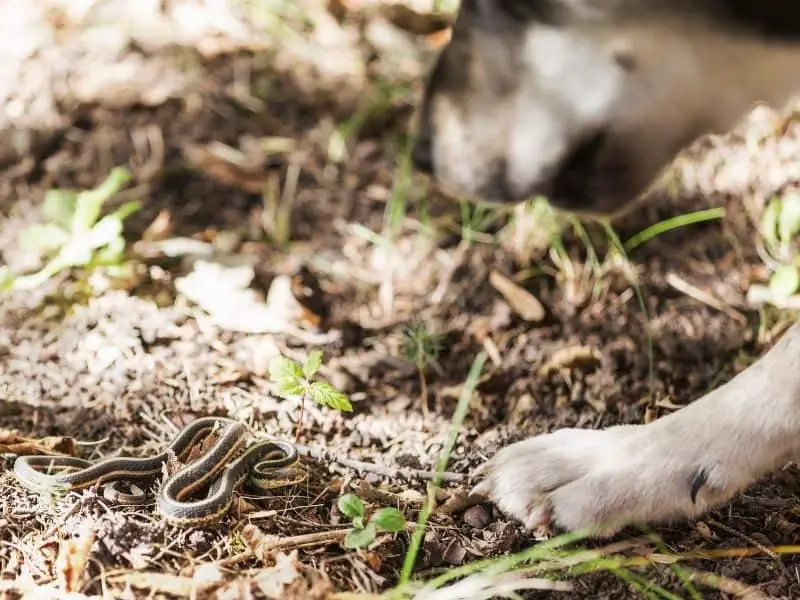
How to Eliminate Garter Snakes on Your Property
Due to their positive and negative effects on your yard and property, it is up to you to decide whether you want to eliminate garter snakes that live in it. You may want them gone from your area because of the potential harm they can cause your dogs.
Sometimes, you cannot control the natural curiosity and inquisitiveness of dogs, and there is always the possibility that they will encounter a garter snake that can cause unwanted consequences.
There are many safe and humane ways to rid your property of these snakes. We recommend that you do not harm them or kill them.
Instead, you can discourage them from making your property their home by removing the elements in it that they need for their food, shelter, and survival.
Once you remove the things they need, they will naturally avoid your area or just visit it infrequently.
The best method is prevention.
Even before there are any snakes in your garden and yard, you can begin taking steps to discourage future infestation.
With what you now know about their habits, you can start removing the things that attract them. You can employ trapping and deterrent measures.
And finally, if nothing else works, you can call a professional snake removal expert.
Inspect your yard and eliminate hiding places
You can eliminate debris, piles, rocks, logs, and other places which snakes can use for hiding.
For rodent burrows, you can discourage snakes from moving in by plugging these holes with soil, gravel, or snake and rodent plug products.
Also take steps to eliminate rodent and insect pests in your home that garter snakes want to eat. Without these prey items, snakes will not have any motivation to seek food in your yard.
Other areas where garter snakes can hide include any dark, damp, and cool places.
These may include areas in your home, such as behind appliances and large cabinets, inside drawers, crawlspaces, literally anywhere they can hide in and squeeze themselves in.
You can probe these areas with a long pole or stick to maintain a safe distance.
Outside your home, snakes can squeeze into gaps, cracks, crevices, and other openings. All openings need to be plugged.
Contact pest control
Snakes love to eat mice, rats, voles, fishes, moles, insects, frogs, other small mammals, and birds. A regular pest control program will keep your property relatively free from pests that will attract garter snakes.
Remove hiding places
Holes, crevices, cracks, and other similar places may be removed to prevent garter snakes from invading the area and living there.
Remove all clutter, debris, piles, heaps, trash, rocks, logs, and similar hiding areas materials.
Aside from giving shade and shelter to snakes, these places also attract their small mammal prey.
Fence out the snakes
If you have the resources and if it is feasible, you may consider installing fences to snake-proof your property.
These can be made from steel mesh, nets, and even plastic sheeting. The fence needs to be well-buried with an outward upper angle and must have a minimum height of three feet.
Make the area uncomfortable for snakes
Certain materials discourage snakes by obstructing or slowing their movements.
Some of the materials which they avoid crawling on include gravel, pine cones, holly leaves, and eggshells. Smooth surfaces also make it hard for snakes to crawl.
Consider snake repellents
There are many commercially available snake repellents that have been found to be effective by various researchers and actual users. You may choose which one works best for your situation.
There are also home snake repellent remedies that use essential oils like lemon grass, as well as chemical ones that are composed of mothballs.
Some also recommend natural snake repellents such as particular plants that you can include in your yards, such as marigold, lemongrass, or wormwood.
Regularly trim and mow vegetation
Tall vegetation attracts rodent prey and garter snakes. To discourage them, regularly keep your surrounding vegetation well-trimmed.
Trap the snakes
Traps are most effectively used by snake removal experts and pest control professionals. If you use them yourself, there are many different kinds that are available.
When you set your traps, wearing protective gear is important so that any unexpected encounters with snakes may be prevented. Such gear include closed shoes, gloves, long pants, and long sleeves.
It is also important to use gloves in handling your traps. Snakes can “smell” the human odor you transfer onto the things you touch, including your traps. Place your traps in areas with snake and snake shed skin sightings.
Hire an expert pest control professional
A pest exterminator may give you advice and services drawn from extensive experience. They are also properly equipped and are well trained to handle dangerous wild animals.
Related questions
Do garter snakes avoid dogs?
There is a very high likelihood that snakes will not approach your dogs. Dogs are much larger than them, and they see dogs – and us, for that matter – as frightful giants.
Dogs are also noisy and can be aggressive, and snakes gain nothing but trouble by approaching dogs.
The mere presence of a dog will likely keep snakes away, or at least keep them immobile from fright to avoid being detected.
It is possible to train your dog to detect snake smells and alert their owners to the presence of snakes.
Does the bite of garter snakes hurt?
Garter snakes are equipped with several small, sharp teeth that can cause small puncture wounds upon biting. They only rarely bite humans or dogs, however, because there are a few benefits and greater danger in doing so.
They cannot eat us or our dogs, and we are more likely to kill them instead. Their mild venom is injected through repeated chewing of the bite site. It is delivered via the fangs at the rear of their mouth.
Sources
- https://woofnowwhat.com/dogs-and-garter-snakes
- https://wagwalking.com/sense/can-dogs-keep-snakes-away
- https://www.morrisanimalfoundation.org/article/sssummertime-ssslithers-what-know-about-snakes-and-your-dog
Photo credit: ©canva.com
Medical Disclaimer: TheHomePestControl is a digital publisher and does not offer personal health or medical advice. The contents of this website are not intended to substitute for professional medical advice, diagnosis, or treatment.
Affiliate Disclaimer: As an Amazon Associate, I earn from qualifying purchases made on our website. If you make a purchase through links from this website, I may earn a commission at no additional cost to you.

